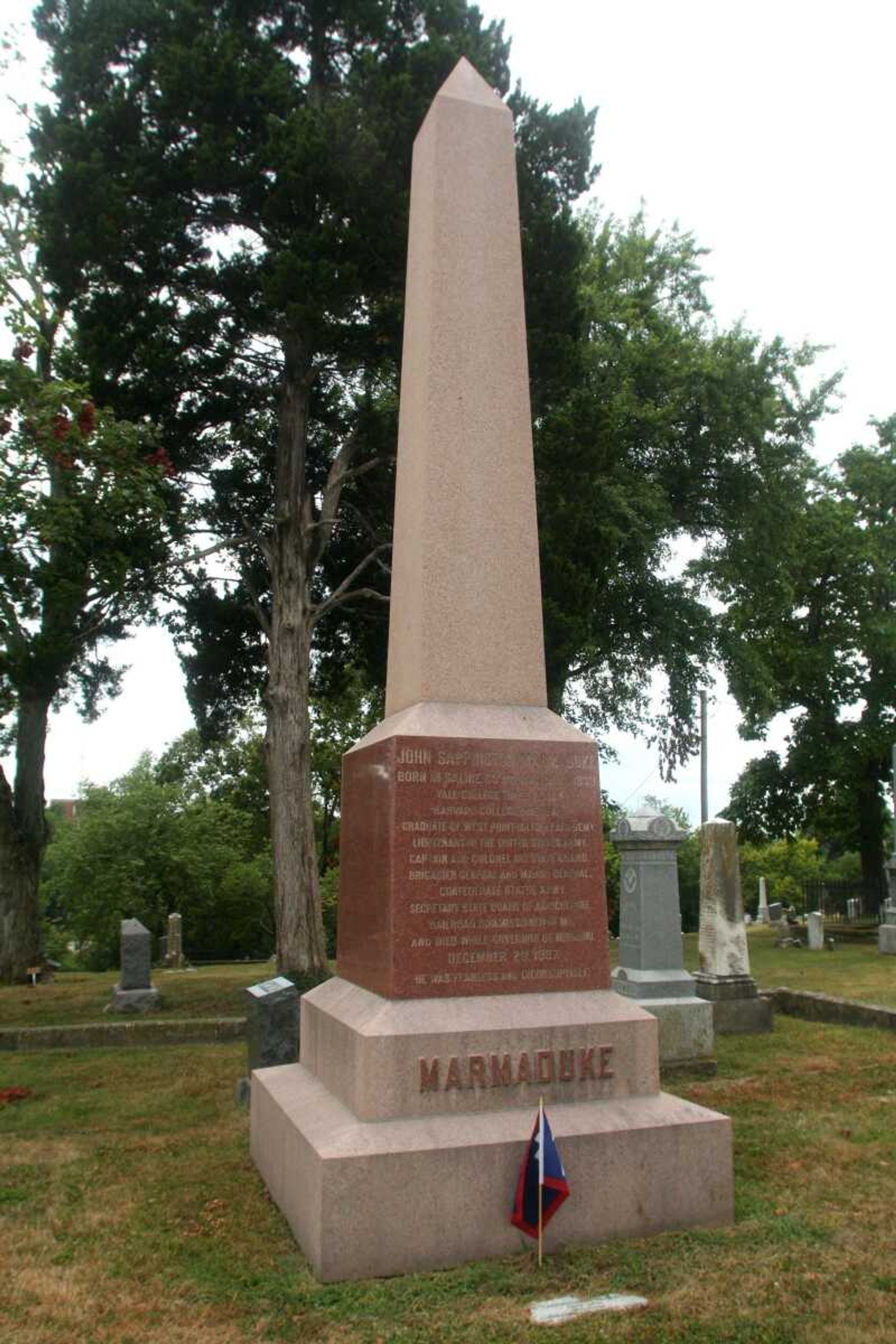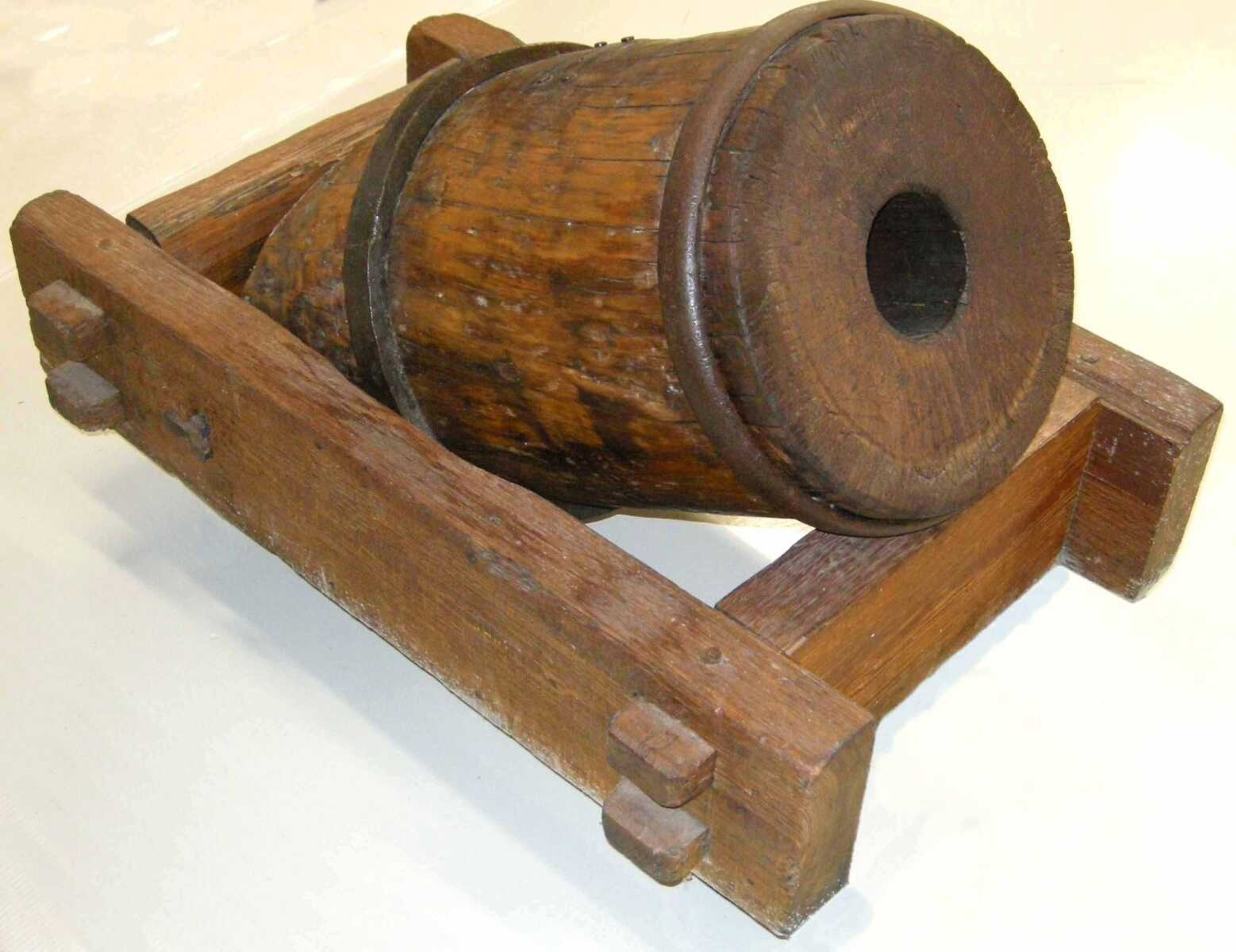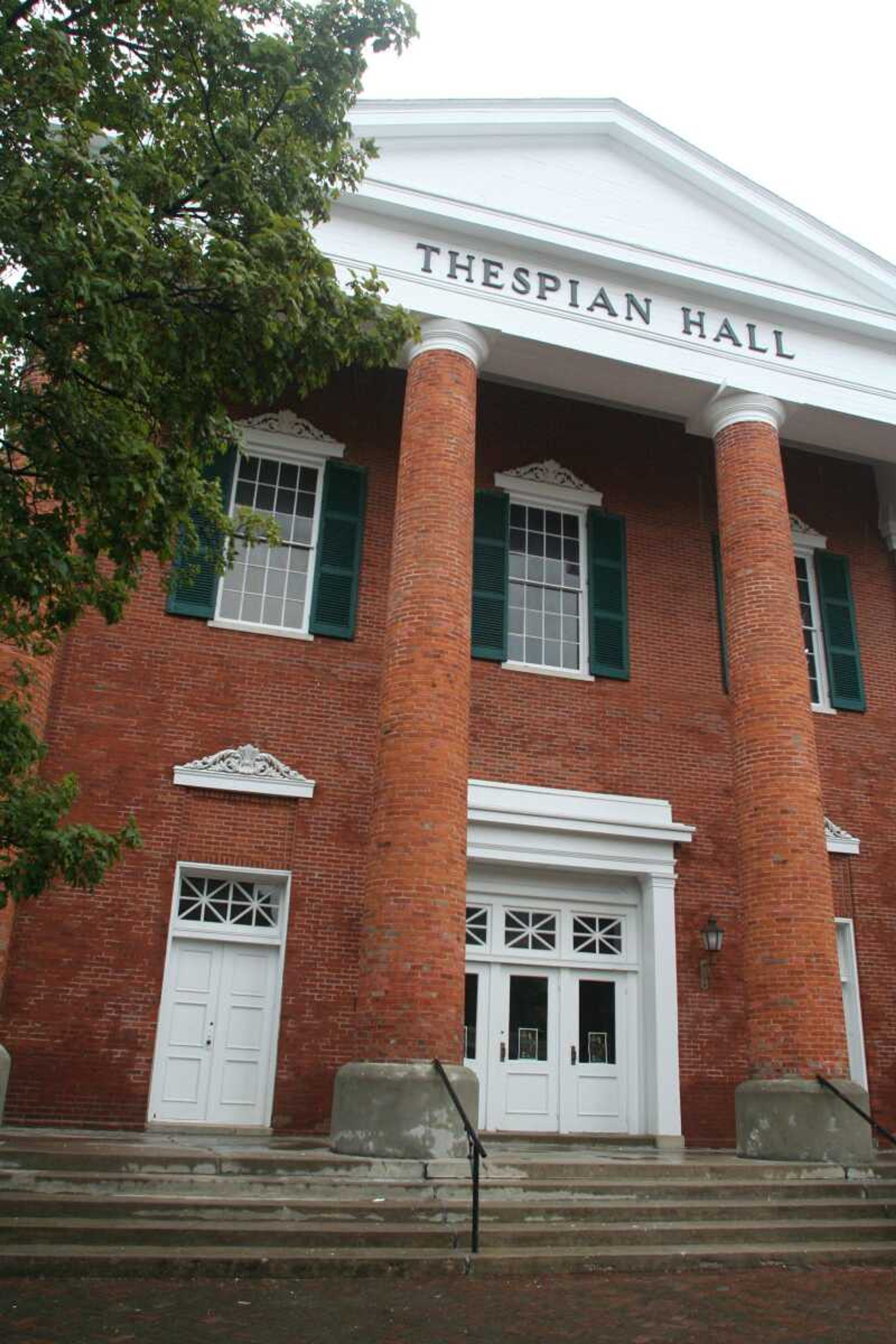A large cannon guards the entrance to "Civil War Missouri: A House Dividing," a new exhibit at the Missouri State Museum on the first floor of the Capitol in Jefferson City.
But it's a much humbler-looking weapon inside that Julie Kemper, the museum's curator of exhibits, picked as her favorite among the artifacts on display.
"It's a sweet-gum mortar, made of a hollowed-out piece of wood," Kemper said of the stubby cannon mounted on a wood frame and reinforced with iron banding. They were made by an African-American unit in New Orleans, and belched out six-pound shells.
"They were intended to last one battle, and split," she said. "But this one didn't get enough use because the battle was cut short. I don't know of any other museum that has one. And, the amazing thing is, we have two."
To mark the 150th anniversary of the start of the Civil War, the Missouri State Museum, a unit of the state park system, created the exhibit to tell the story of the war from its premature start in the Kansas-Missouri border war in 1856 and ending in 1865, with the Union victorious but both sides bitter.
Among other artifacts on display in the museum is the state seal, which Gov. Claiborne Fox Jackson took with him when he fled Jefferson City with his pro-Southern government in 1861. The seal is on loan from the Missouri State Archives. Also on display are selections from the museum's collection of rare flags, one of the largest in the country.
"We have the flag of the Irish 7th Missouri Infantry, which had special permission to make their own regimental flag," Kemper said. "We also have John Sappington Marmaduke's personal flag." A red granite obelisk marking Marmaduke's grave in a Jefferson City cemetery describes his celebrated life: Schooled at Harvard and Yale, graduate of West Point, a Confederate major general wounded at the Battle of Shiloh, and the 25th governor of Missouri, who died while in office. An inscription says, "He was fearless and incorruptible."
Oh, for help!

The creators of the Civil War exhibit wanted to give the experiences of real Missourians in the war, Kemper said, and describe Missouri's important role in the national conflict. "We use sound, images, text from letters," Kemper said. "Mostly, what we're trying to give is a personal story about the individuals."
During her research, Kemper said she became enamored with the story of the Roseberry family and with the writings of Rachel Anderson of Greene County, who eloquently described the horrors of the war in her letters.
"The Roseberrys were up in northeast Missouri -- two men, brothers and fathers, and eight in the next generation who all ended up in the 21st Infantry together," Kemper said. "One of the sons, Thomas A., went in as a drummer boy at 15 years old. He ended up deserting, he was scared. They sent his father after him."
The boy later was discharged, so he wasn't listed as a deserter, and rejoined the 21st while his brothers were still serving. The exhibit has five sound domes with actors portraying the voices of the war. Stand beneath one and you hear an actress reciting a quote from the bereaved Rachel Anderson.
"This state is in an alarming condition," she says. "Towns, farms, houses are being burned. Men hung or shot. Women accidentally killed and wounded. Children crippled or killed by careless soldiers. Oh, for help!"
Battle in a wheat field
Missouri was the site of 1,162 Civil War battles, only Virginia and Tennessee had more. A map in the museum exhibit illustrates 900 battles for which the location and numbers of soldiers could be confirmed. One of the earliest, and most pivotal, battles was fought on June 17, 1861, in a wheat field outside the town of Boonville in central Missouri. Just 20 minutes long, the skirmish may have turned the tide against the Confederacy.
Gov. Claiborne Fox Jackson intended to lead Missouri into the Confederacy, and declared his sympathies in a stormy meeting in St. Louis with Union Gen. Nathanial Lyon. When Jackson, along with Confederate Maj. Gen. Sterling Price, fled back to Jefferson City, Lyon gave chase with 2,000 soldiers. Jackson was positioned with some 1,500 pro-Southern State Guardsmen under Col. John Sappington Marmaduke in a wheat field near Boonville. Marmaduke knew his men were ill-trained and poorly equipped, but Jackson insisted they take on the advancing Union forces.
Marmaduke's men withered under the accurate aim of the Union artillery, and he ordered a retreat. When the fighting was over, three Southerners were killed, and up to nine wounded. The Union casualties were five killed, seven wounded.
Battle over corn

Maryellen McVicker, a college history professor who is co-chair of the Boonville Civil War Commemorative Commission, said the battle fit the age-old axiom that an army travels on it belly.
"The battle gave Union forces command of the Missouri River," McVicker said. "All of the food, particularly the corn, traveled by river. The battle was not about the men, it was about the food supply.
"The Confederacy couldn't get the corn; that's one of the reasons why Missouri stayed in the Union."
An ex-Confederate, Thomas L. Snead, wrote in 1888 of the battle: "Insignificant as was this engagement in a military aspect, it was in fact a stunning blow to the Southern Rights' people of the state, and one which did incalculable and unending injury to the Confederates."
Thespian Hall, which was built in 1857 in downtown Boonville, was commandeered by the Union army and used as a headquarters and hospital. The Confederates fought three more battles in efforts to take the town, but none were successful.
The commission staged a re-enactment this summer on the field where the first battle was fought 150 years ago. Others events are planned for the coming years.
Connect with the Southeast Missourian Newsroom:
For corrections to this story or other insights for the editor, click here. To submit a letter to the editor, click here. To learn about the Southeast Missourian’s AI Policy, click here.








